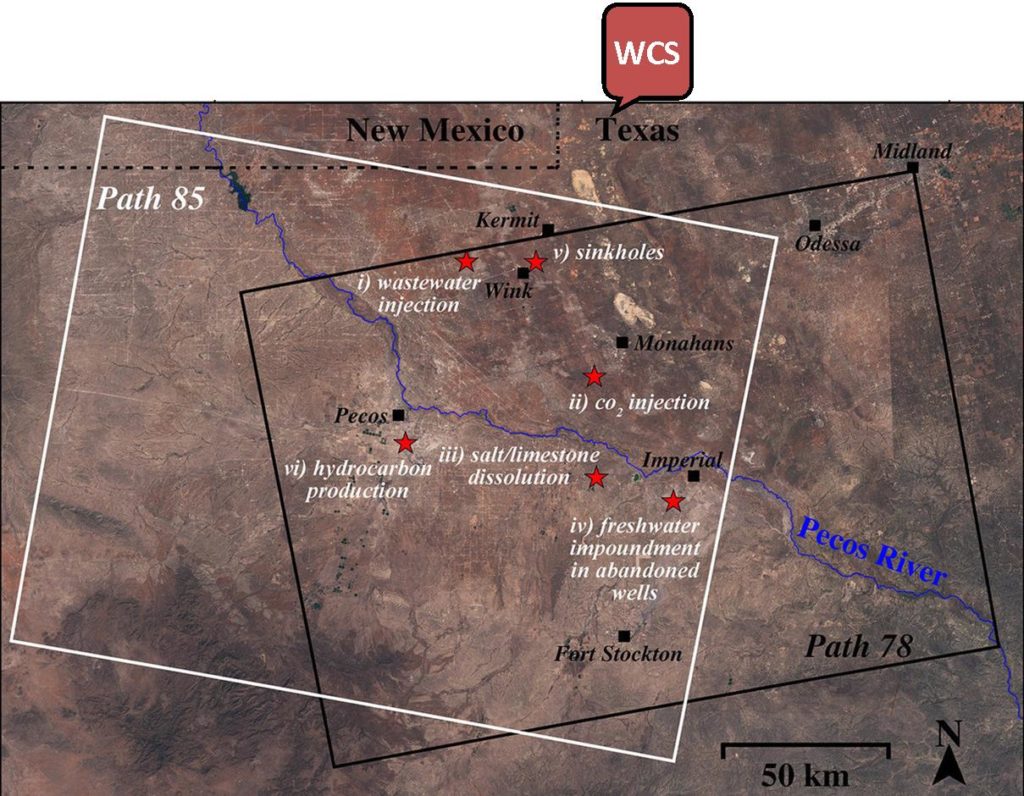Public Citizen’s Texas office is engaged with cities across the state in developing Climate Action Plans. We were heavily involved in the development of the Austin Community Climate Plan (pdf download) and now we are participating in a similar effort in San Antonio. We are also looking at efforts to prepare for climate change in Houston and Dallas.
One of the drivers of city-level action on climate change today is the Mayors National Climate Action Agenda, sometimes known simply as the “Climate Mayors”. Mayors of six Texas cities—Austin, Dallas, Houston, San Antonio, San Marcos, and Smitville—have signed the Climate Mayors letter. Of those six, only Austin has completed a Climate Action Plan.

Houston Mayor Sylvester Turner (far right) is co-chair of the Mayors National Climate Action Agenda.
Fortunately for the rest of Texas, the Climate Mayors have provided guidelines on developing your city’s Climate Action Plan. Below, we look at the five big steps in municipal climate planning.
- Develop an inventory of greenhouse gas emissions.
An “emissions inventory” is an accounting of all the air pollution emissions a particular source or group of sources. A greenhouse gas (GHG) emissions inventory focuses on the pollutants responsible for climate change, chiefly carbon dioxide and methane. The inventory is important because it provides a starting point for the rest of the plan—a baseline of GHG emissions. As one popular saying puts it, “What gets measured, gets improved.”
Cities have an important choice to make when completing their GHG inventory: will they count all of the emissions within their borders, or just the emissions caused by municipal operations?
What’s the difference? Taking cars in Houston as an example, it’s the difference between the few hundred vehicles that the City of Houston itself owns and the 2 million + vehicles in the city in total. Many cities will lean toward inventorying only their own emissions, arguing that these are the only emissions that they are directly responsible for. But a complete inventory of all of the GHG emissions within a city’s borders can lead to a more comprehensive plan. A city can control its own vehicle purchases absolutely, but it can also enact policies that cause its citizens to buy cleaner vehicles. It could, for example, offer more charging infrastructure for electric vehicles.
- Establish a target for emissions reductions.
Once a city has inventoried its GHG emissions, it’s time to set a target for emissions reductions. When the United States initially joined the Paris Climate Accord, it set a target of 26 to 28 percent emissions reductions by 2025, over a 2005 baseline. (Those baseline emissions included 6,132 million metric tons of carbon dioxide, so the CO2 target for 2025 would be between 3,267 and 4,538 million metric tons.)
According to the Climate Mayors, many cities have adopted “80×50” goals, committing themselves to reducing GHG emissions by 80 percent by 2050. Interim milestones are an important part of these goals, with most cities establishing their first milestone between 2020 and 2030.
Austin has adopted the goal of “net-zero community-wide greenhouse gas emissions by 2050.” Note that “community-wide” emissions means all of the GHG pollution produced by everyone in the city, not just municipal operations.
- Prioritize and ‘bundle’ emissions reduction opportunities.
Next a city must identify, prioritize, and bundle its opportunities to reduce GHG emissions. Important considerations include political feasibility, cost, funding opportunities, ease of implementation, and timing. Also important are co-benefits of a given measure. Replacing old school buses, for example, reduces children’s exposure to harmful pollutants such as particulate matter.
A comprehensive plan will take into account existing efforts, ongoing state and federal obligations, and the long timeline (typically several decades) of a climate plan. Emissions reductions opportunities should also provide a reliable way to quantify emissions achieved. Once emissions reductions opportunities are scored and packaged, they should be integrated into a long term plan to achieve the goals set in step two of the process.
- Design an implementation plan.
A city’s implementation plan will dictate exactly how it enacts the measures it has committed to in its Climate Action Plan. The strength of the implementation plan can distinguish “next generation” plans from earlier, less effective ones. It is here, in the details of implementation, that a plan will succeed or fail. The Climate Mayors have provide detailed examples of successful strategies for next generation plans. A common theme throughout its recommendations is “analytical rigor.” The plan should provide methods to quantify emissions reductions and a means to evaluate success.
- Establish a framework for monitoring success and refining the plan.
Analytical rigor will enable the final step in climate planning: monitoring success and refining the plan over time. The Climate Action Plan should provide, at its outset, a framework for quantifying the success of a given action. Detailed records should be kept and checked against milestones built into the plan’s reduction targets. If an action is not working, the plan should provide a method to change courses. Because climate action plans set goals decades into the future, regular review and refinement of a plan is essential.
These five steps may seem straightforward, but climate planning is a complex process. Fortunately, cities no longer have to go it alone. The Climate Mayors has aggregated the experience of dozens of cities and developed a robust set of recommendations for new climate planners (for example, 94 percent of cities with an existing plan said that, were they to revise their plan, transportation would be a “very important” area to consider). Public Citizen’s Texas Office offers its help to any city or group of citizens who are interested in climate planning.
Nationwide, 389 mayors have signed the Climate Mayors letter. If all of those cities developed robust plans, the United States could meet its targets in the Paris Accord without federal action. Several cities in Texas have begun the process, and we hope that they see it through to a successful Climate Action Plan.
Happy climate planning!
Read Full Post »












